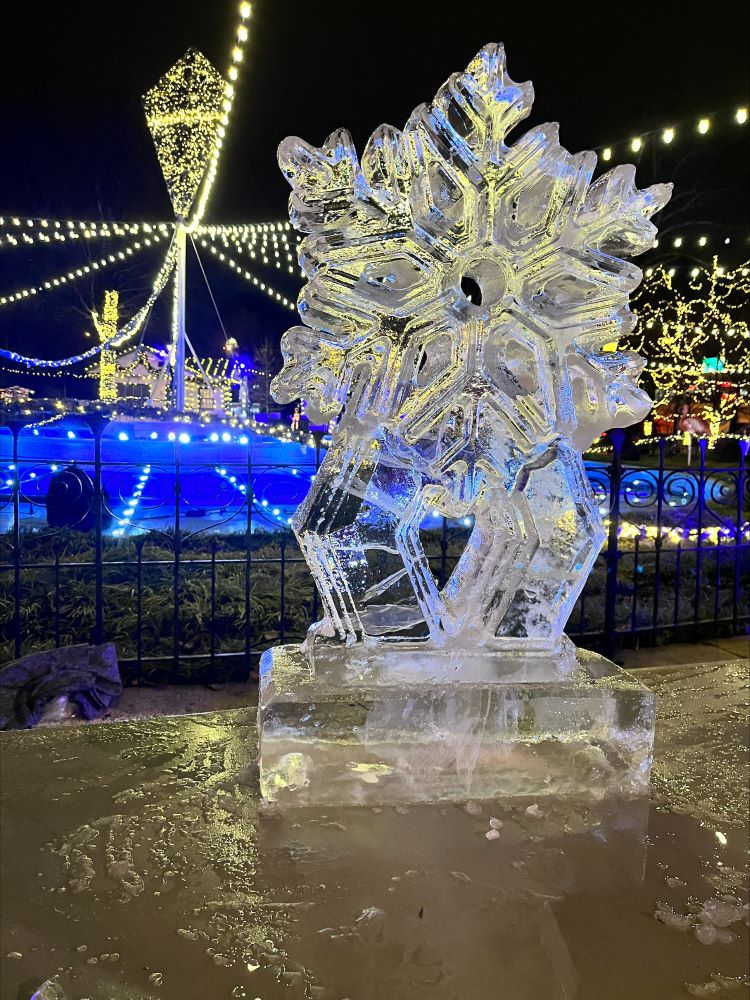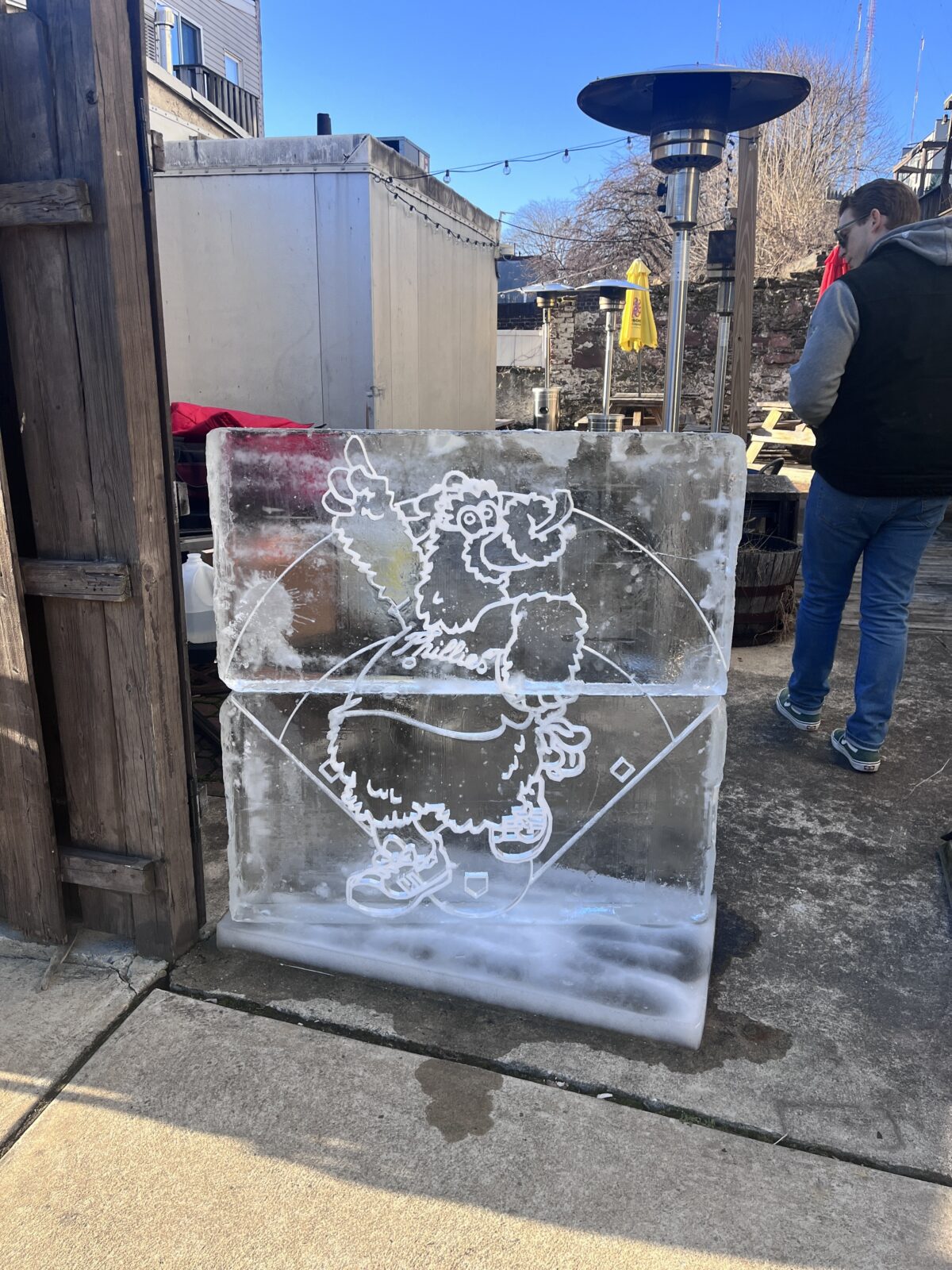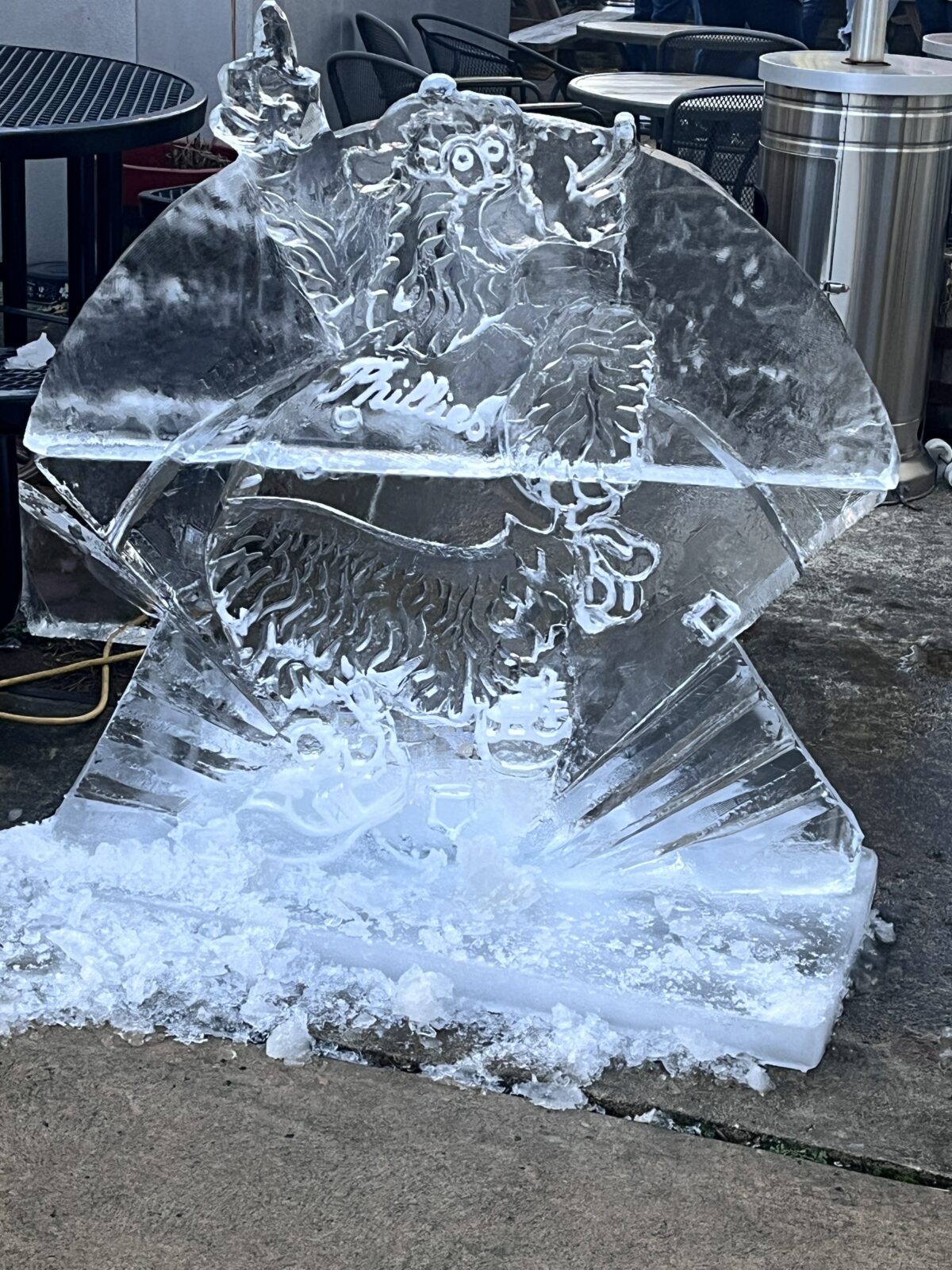For 20 years, Peter Slavin carved all of his intricate ice sculptures by hand. But now he has the technology to make the process more efficient and precise.
Slavin is the founder of West Philadelphia-based Ice Sculpture Philly, an organization that makes ice sculptures for client events, ranging from corporate blowouts to birthday parties to weddings. For over a decade, the organization has also worked with businesses associations to produce winter festivals.
Slavin’s background includes international ice sculpture competitions, where he has won five world championships for his work.
“Ice is ever changing, like our lives,” Slavin told Technical.ly. “As a ice sculptor, we love it, because it’s a fast medium to work in and then it melts.”

An ice sculpture at Franklin Square. (Courtesy Roger Wing)
Tech as a sculptor’s tool
For most of his career, he primarily used chainsaws and power tools, but six years ago the organization got a computer numerical control (CNC) machine, a piece of equipment that follows instructions from computer software to cut and create its product. In this case, it’s cutting and shaping ice.
The ice-sculpting process starts with a sketch based on the ideas a client shares. The sketch gets programmed into a software program called VCarve, which tells the CNC machine what to do. Slavin and his lead designer scan the sketch into the program and clean it up using a digital drawing pen. They then program in the dimensions of the design, which tells the machine where to cut.
Ice Sculpture Philly using a CNC machine pic.twitter.com/pwTVINkwlE
— Technical.ly (@Technical_ly) February 14, 2024
“We won’t teach it to cut a line perfectly. We’ll teach it to just have a little bit more of my style of how I draw, so it’ll be a little bit more of a wavy-gravy line, than a precise confident line,” Slavin said. “And that helps give it the human touch even though it could sculpt it perfectly.”
Before he owned the machine, Slavin’s process was more time consuming: He would sketch a template of the design on a piece of paper the same dimensions as the ice block. He’d then dip the paper in water and stick it to the ice and cut out the shape from that outline.
Instead, the CNC machine can carve 80% of the sculpture, and Slavin or a member of his team will finish the last 20% by hand, leaving their personal touch.
The machine saves time and money, makes the business more efficient and the sculptures more precise. But letting machines do all of the work can make you lazy as an artist, Slavin said.
Live ice carving, Philly style
Ice Sculpture Philly’s winter festival season works with neighborhoods and townships in Philadelphia and the surrounding suburbs. The season starts the second week of December and runs until the first week of March.
Slavin pitches these festivals to business associations as a way to get people out and frequenting local businesses in the winter, which can be a slower season. Ice Sculpture Philly creates sculptures for each store and restaurant to display during the festivals.
These festivals also feature live ice carving. Ice Sculpture Philly brings blocks of ice that have been pre-cut with designs via the CNC machine, and they finish the sculptures with chainsaws, chisels, ice picks and grinders.

First stage of a Philly Phanatic sculpture. (Courtesy Roger Wing)
“Ice carving is a novel, fast, and completely transparent — pun intended — process,” Roger Wing, a ice sculpture artist who participates in these winter festivals, told Technical.ly. “In just minutes, spectators can watch a clear block of ice transformed into a sculpture. It is very gratifying to hear people in the audience say ‘Wow!’”
An upcoming festival will be held in Roxborough on Feb. 24.

Completed Phanatic sculpture. (Courtesy Roger Wing)

The Tech Behind is a Technical.ly series in which we explore the technology that powers notable institutions. Have an idea for our next edition? Tell us.
Before you go...
Please consider supporting Technical.ly to keep our independent journalism strong. Unlike most business-focused media outlets, we don’t have a paywall. Instead, we count on your personal and organizational support.
Join our growing Slack community
Join 5,000 tech professionals and entrepreneurs in our community Slack today!

Entrepreneurship is changing, and so is the economic development behind it

Ghost Robotics settles ‘robot dog’ patent lawsuit with Boston Dynamics

The Clay Studio is working to make tech tools more accessible to community artists



